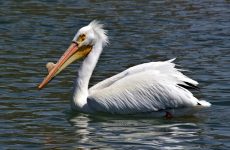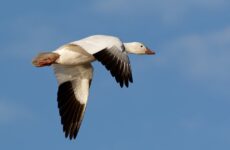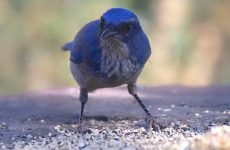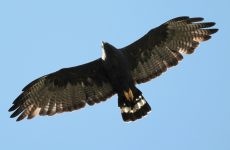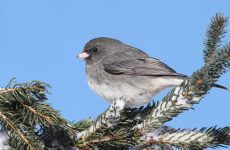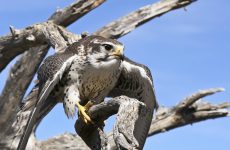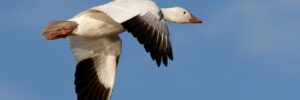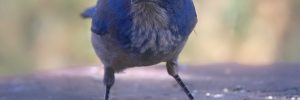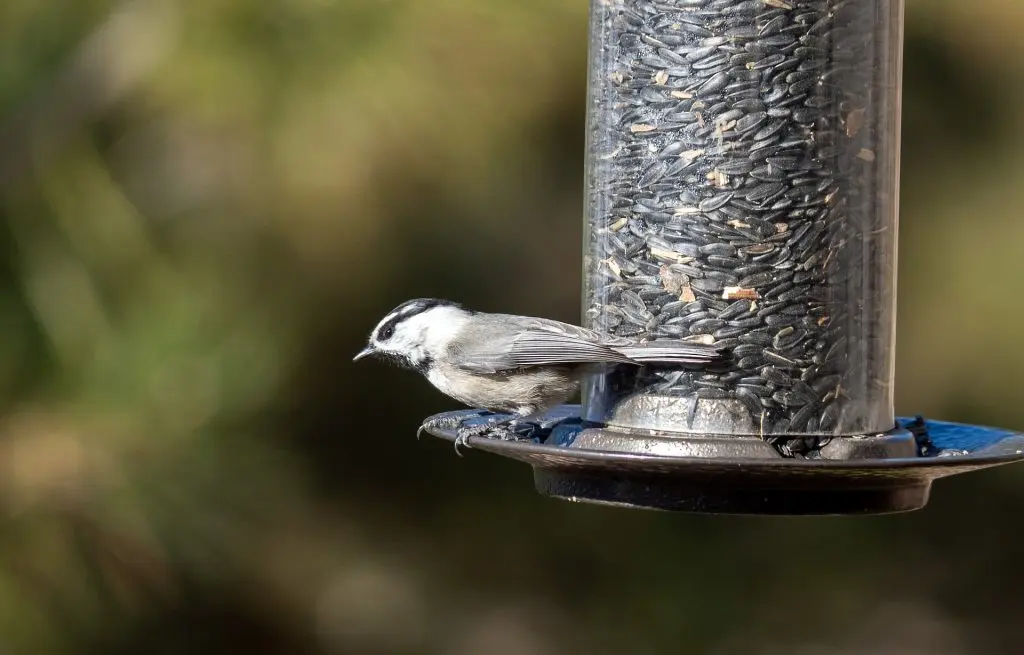
This guide will help you identify all the species of Chickadees that can be spotted in Utah with photo IDs and descriptions, audio recordings of their songs, and fun facts, plus more.
Chickadees are busy little songbirds that flit around looking for insects, and they will readily come to backyard feeders. They are part of the Poecile family of birds, and there are only seven species of Chickadee, all of which live in North America.
There are 2 types of chickadees that can be spotted in Utah. They are Black-capped Chickadees and Mountain Chickadees.
Chickadees do not migrate, but they may travel to lower ground in winter. To survive the cold winter months, studies have shown that Chickadees cache food, roost in cavities, and go into a state of regulated nocturnal hypothermia to save energy.
Chickadees have an insatiable appetite due to their high body temperature and need to consume their own body weight in food each day!
Chickadees do not usually live very long, in fact only about two or three years, and they may only live for one year as an adult and only have one breeding season. However, here have been chickadees recorded as living for twelve years.
Male and female chickadees look the same, so it can be difficult to tell them apart, except only the males sing the loud ‘Fee-bee’ song.
Chickadees eat insects and seeds, and they will often come to backyard feeders for seeds or suet. Find out the other types of backyard birds that regularly visit Utah and print a free ID chart.
This guide will help you identify the types of Chickadees spotted in Utah according to avibase and uses data collected from bird watchers on ebird to give real information about when these birds can be spotted.
2 Types Of Chickadee In Utah:
1. Black-capped Chickadee
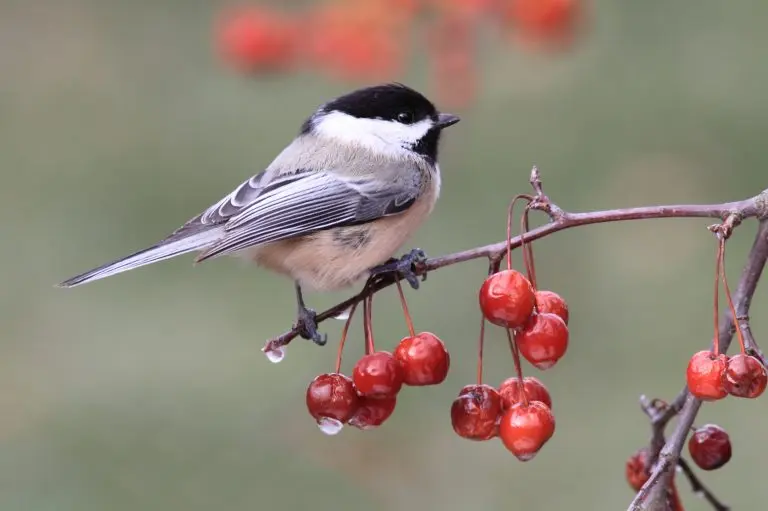
Black-capped Chickadees can be found all year in Utah. They are recorded in 16% of summer checklists and 25% of winter checklists submitted by bird watchers for the state.
Black-capped Chickadees are cute birds with big round heads and tiny bodies. These birds will happily feed at backyard feeders and investigate everything, including you!
They have black caps, beaks, and throat, with white cheeks, and are gray on the back, wings, and tail. Their bellies are lighter. They look very similar to Carolina Chickadees.
- Poecile atricapillus
- Length: 4.7-5.9 in (12-15 cm)
- Weight: 0.3-0.5 oz (9-14 g)
- Wingspan: 6.3-8.3 in (16-21 cm)
Black-capped Chickadees do not migrate and can be spotted in the northern half of the US and Canada.
You can find Black-capped Chickadees in forests, open woods, and parks. They eat seeds, berries and insects, spiders, and suet.
Black-capped Chickadee Call/Song:
Nests of Black-capped Chickadees are usually in old woodpecker nests, but they may make their own cavity in rotten branches. Both the male and female will make the nest, and then the female lines it with moss and then other softer material such as fur.
They can lay a large clutch of up to thirteen eggs, which take around two weeks to hatch and a further two weeks for the young to leave the nest.
Attract Black-capped Chickadees to your backyard with suet, sunflower seeds, and peanuts or peanut butter. They will even feed from your hand and are often one of the first birds to discover new feeders. They will also use nest boxes, especially if you fill them with wood shavings.
Fun fact: Black-capped Chickadees’ brains are amazing in that each year they let old brain neurons die to lose old information they do not need and replace it with new neurons and information.
2. Mountain Chickadee
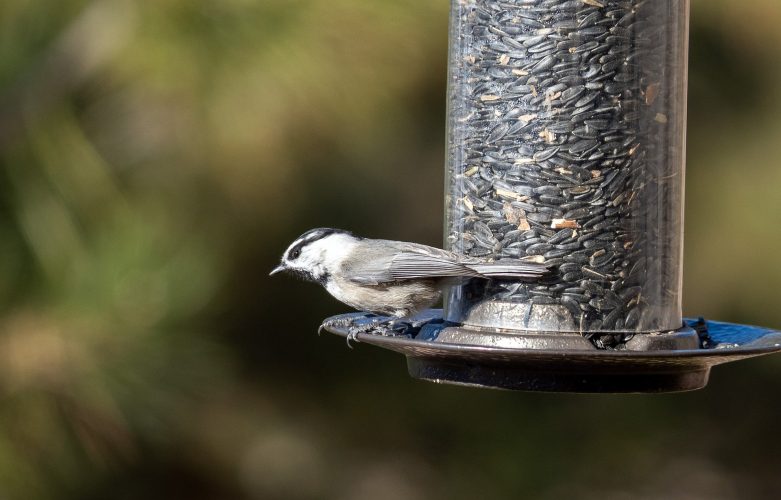
Mountain Chickadees are spotted all year in Utah. They occur in up to 7% of summer and winter checklists for the state.
Mountain Chickadees are tiny birds with black-and-white heads and gray over the body, darker on the back and light gray underneath.
- Poecile gambeli
- Length: 4.3-5.5 in (11-14 cm)
- Weight: 0.4 oz (11 g)
Mountain Chickadees live in the mountains west of the US all year and do not migrate but may move down the mountain to lower areas in winter.
You can find Mountain Chickadees in evergreen forests, especially those with pine and conifers. They eat insects and spiders, nuts, and seeds and will often visit backyard feeders. Mountain Chickadees will often stash food for later and create a store of food.
Nests of Mountain Chickadees are usually in old nesting holes of woodpeckers and nuthatches. The female lines the cavity with fur and even covers her eggs when she leaves. They lay up to nine eggs, which take around two weeks to hatch and a further three weeks for the young to leave the nest.
Attract Mountain Chickadees to your yard by putting up nest boxes, and they will visit most types of feeders with black oil sunflower seeds, mealworms, nyjer, suet, and peanut butter.
Fun fact: The eggs of Mountain Chickadees are incubated 50% longer than other chickadee species, probably due to the protection that their old woodpecker nests give and the fact the female covers the eggs when she leaves.
Attract Chickadees To Your Backyard
Chickadees are a delight to watch with their constant hurrying to get enough food to eat. So if you want to watch more of these cute little birds, then you need to attract them to your yard.
- Supply feeders with black oil sunflower seeds, nyjer seeds, suet, or peanuts
- They will feed on most types of feeders, including tube feeders, suet cages, or platform feeders
- Provide a water source such as a birdbath, preferably with running water
- Plant berry-producing trees and shrubs that attract insects
- Don’t use pesticides or herbicides as Chickadees eat insects
- Provide shelter with trees and shrubs
- Provide a nest box with a small hole of 1 1/8 inch and raise 5 – 15 feet above ground
- Keep cats indoors
- Be patient as it can take a while for birds to find your yard and feeders
Chickadee Songs and Calls
Chickadees are famous for the namesake chick a dee call, but this call is, in fact, a mild alarm call or contact call, and their song is actually a ‘fee bee’ sound.
Chickadee Sounds:
1. Fee-bee
- It is produced by males
- The first note is higher pitched than the second
- Males move away from other males when they sing
2. Faint Fee-bee
- Produced by both males and females
- Females use this to call the male to feed her when she is incubating
- Used between parents and young
3. Chick-a-dee call
- Mild alarm call
- Contact calls in flocks
- Coordinate movements in flocks
4. Gargle
- Series of two to nine short notes
- Used when birds get too close in flocks or at feeders
- It is a warning call before the chickadee may attack another to make them move further away
5. Begging Call
- Young chickadees make bee calls to get their parents to feed them
5. High Seet Call
Alarm Call when predators are around
How Frequently Chickadees are Spotted in Utah in Summer and Winter
Checklists are a great resource to find out which birds are commonly spotted in your state. These lists show which chickadees are most frequently recorded on checklists on ebird in summer and winter in Utah.
Chickadees in Utah in Summer:
Black-capped Chickadee 16.8%
Mountain Chickadee 7.1%
Chickadees in Utah in Winter:
Black-capped Chickadee 25.1%
Mountain Chickadee 6.2%

